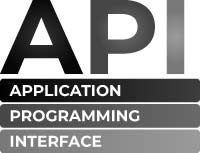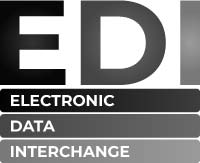What Are EDI and API?

Application Program Interfaces
API is the newcomer to information exchange. Since its development in the early 2000’s, API often find use in Cloud SaaS (Software as a Service) applications.
API versus EDIAPIs quickly move data between one system and another. They enable devices to speak to each other in real time. Web service APIs provide easy integration to back end business systems.
APIs allow companies to leave parts of their software available or “open” so other software can easily integrate to them. One term you may encounter is “RESTful API.” REST stands for Representational State Transfer. It relies on a stateless, client-server, cacheable communications protocol, usually HTTP.

Electronic Data Interchange
EDI emerged during the 1970’s as a way to streamline business processes. These include ship notices, invoicing and purchase orders. It has been the long-time industry standard due to its security and reliability.
EDI versus APIIt establishes a set of messaging standards, transferring data from system to system without using paper. This reduces the need for manual labor.
EDI allows the exchange of business documents in electronic format. Trading partner companies can then transfer documents such as purchase orders, invoices, ASNs, BOL and more.
API Versus EDI Integration
So what’s the difference between API and EDI integration? Both transmit data from one business partner to another. But each has its strengths and weaknesses.
API implementation may be less costly and more straightforward than EDI by not requiring on-going maintenance or translation services. But, the benefits of API may be offset by the need for more collaboration to reach communication standards. This is especially evident with the addition of a new trading partner.
Meanwhile, EDI operates from an agreed upon standard for communication and data exchange. For example, if a company sends an 850 PO document to a supplier, the recipient already knows to begin the order fulfillment process.
EDI Data is stored then transmitted. As a result, there may be some limitations to real-time access and responsiveness.
EDI VS API, Which Should You Choose?
When considering API vs EDI, it may not be an either/or situation. This, of course, depends on your company’s individual needs. Businesses should review the requirements of their trading partner(s).
By 2020, Gartner estimates that APIs will perform 25% of B2B interactions. Legacy technology will still handle the majority.
edi integrationIncreasingly, trading partners may use a mix of APIs and legacy systems, including EDI. Another issue to consider is compliance and security. Some information, such as financial data, may be subject to audits. API integration may not be a suitable solution to adhere to compliance regulations.
Whether your company needs to put in place EDI requirements to meet Honda certification or pursue web API connectivity with Amazon, Radley can provide the solution you need to automate business transactions. Contact a product specialist today to get started.
How Else Can Radley Help You?
Contact Us Today!
Talk to an EDI Specialist to learn how Radley’s EDI outsourcing service can help you.

